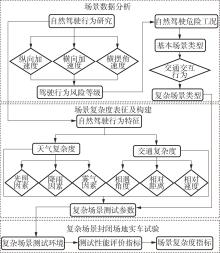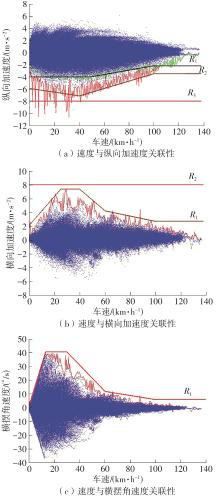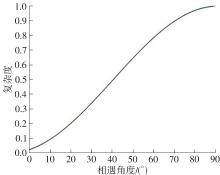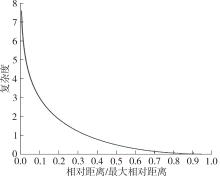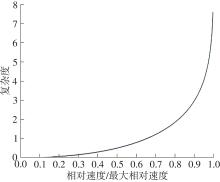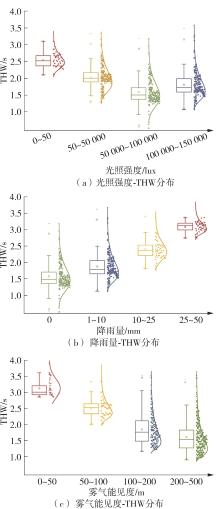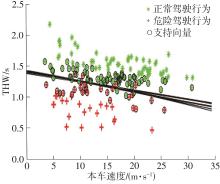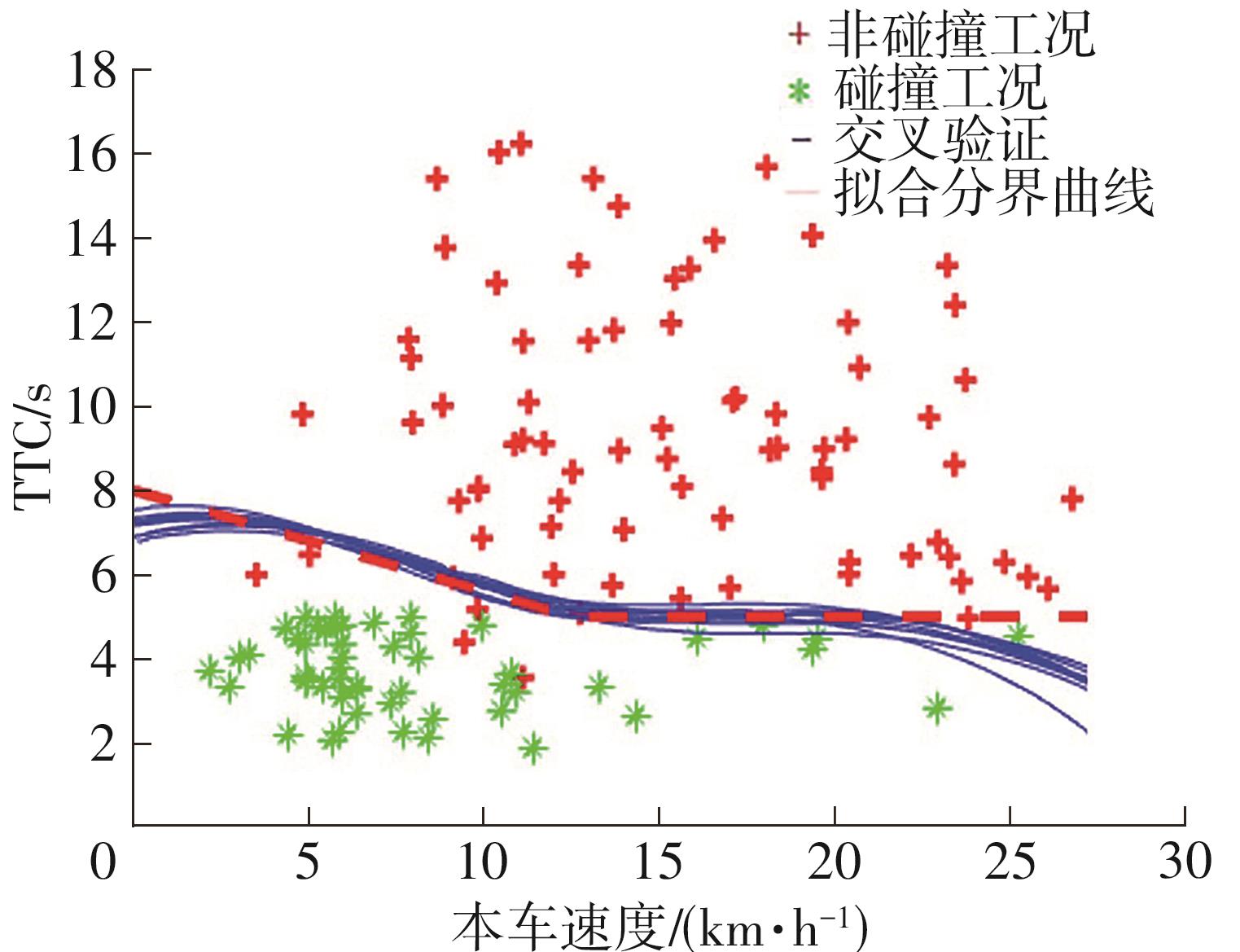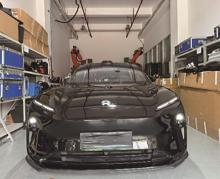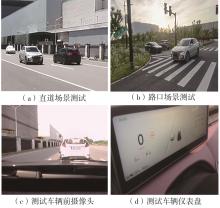Journal of South China University of Technology(Natural Science Edition) ›› 2025, Vol. 53 ›› Issue (2): 38-47.doi: 10.12141/j.issn.1000-565X.240346
• Traffic Safety • Previous Articles Next Articles
Complex Scenario Construction Method for Navigation Pilot Based on Natural Driving Behaviour
WU Biao, REN Hongze, ZHENG Lianqing, ZHU Xichan, MA Zhixiong
- College of Automotive Studies,Tongji University,Shanghai 201804,China
-
Received:2024-07-01Online:2025-02-25Published:2025-02-03 -
Contact:马志雄(1978—),男,博士,讲师,主要从事智能网联汽车主被动安全测试评价研究。 E-mail:mzx1978@tongji.eud.cn -
About author:武彪(1987—),男,博士生,主要从事智能网联汽车安全分析研究。E-mail: biao.wu@tongji.edu.cn -
Supported by:the National Key R & D Program of China(2022YFB2503404)
CLC Number:
Cite this article
WU Biao, REN Hongze, ZHENG Lianqing, ZHU Xichan, MA Zhixiong. Complex Scenario Construction Method for Navigation Pilot Based on Natural Driving Behaviour[J]. Journal of South China University of Technology(Natural Science Edition), 2025, 53(2): 38-47.
share this article
Table 5
Complex scenario types and descriptions"
| 复杂场景类型 | 场景描述 |
|---|---|
| 巡航 | 前车的前车制动,前车切出 |
| 前车的前车低速,前车切出 | |
| 前车制动,相邻车道有车 | |
| 前车低速,相邻车道有车 | |
| 相邻车道前车的前车切入本车车道 | |
| 本车车道前方有车,相邻车道前车切入本车车道 | |
| 相邻车道有车,另一侧相邻车道车辆切入 | |
| 变道 | 本车车道后方有车,相邻车道后方有车,本车变道至相邻车道 |
| 本车车道前方车辆制动,相邻车道后方有车,本车变道至相邻车道 | |
| 本车车道前方车辆低速,相邻车道后方有车,本车变道至相邻车道 | |
| 本车车道前方障碍物,相邻车道有车,本车变道至相邻车道 | |
| 本车变道,目标车道的外侧车道有车同时变道 | |
| 路口 | 本车对向车道遮挡,遭遇横向来车 |
| 本车同向车辆遮挡,遭遇横向来车 | |
| 本车中央隔离带遮挡,遭遇横向来车 | |
| 本车左转,遭遇对向右转目标车辆 | |
| 本车右转,遭遇横向直行目标车辆 |
Table 8
Complex scenario test parameters"
| 参数 | 数值 |
|---|---|
| 场景类型 | 巡航场景 |
| 场景描述 | 前车的前车制动,前车切出 |
| 场景图示 |  |
| 试验环境 | 试验道路为至少包含两条车道的直道,最少有1条虚线车道线 |
| 试验方法 | 测试车辆以最小跟车距离跟随目标车辆1匀速行驶,目标车辆2制动导致目标车辆1变道,测试车辆遭遇制动的目标车辆2 |
| 天气条件 | 光照强度:40 lux |
| 降雨量:5 mm | |
| 雾气能见度:100~200 m | |
| 测试参数 | 测试车辆速度:60 km/h |
| 目标车辆1纵向速度:60 km/h | |
| 目标车辆1横向速度:4 m/s | |
目标车辆2纵向速度:50 km/h 目标车辆2纵向减速度:-4 m/s2 | |
| 目标车辆1和目标车辆2间距:10 m |
| 1 | 导航智能驾驶测评规程(2020版修订版): IVISTA SMNP TPR A0—2022 [S]. |
| 2 | Intelligent transport systems-Forward vehicle collision systems-Performance requirements and test procedures: [S]. |
| 3 | Intelligent transport systems-Lane departure warning systems-Performance requirements and test procedures: [S]. |
| 4 | Intelligent transport systems-Adaptive cruise control systems-Performance requirements and test procedures: [S]. |
| 5 | Uniform provisions concerning the approval of vehicles with regard to automated lane keeping systems:UN ECE R157—2021 [S]. |
| 6 | RIEDMAIE S, PONN T, LUDWIG D,et al .Survey on scenario-based safety assessment of automated vehicles[J].IEEE Access,2020,8(4):87456-87477. |
| 7 | HAUER F, SCHMIDT T, HOLZMÜLLER B,et al .Did we test all scenarios for automated and autonomous driving systems?[C]∥ Proceeding of the 2019 IEEE Intelligent Transportation Systems Conference (ITSC).[S.l.]: IEEE,2019:2950-2955. |
| 8 | DUAN J, GAO F, HE Y,et al .Test scenario generation and optimization technology for intelligent driving systems[J].IEEE Intelligent Transportation Systems Magazine,2020,14(1):115-127. |
| 9 | GELDER E,HOF J, CATOR E,et al .Scenario para-meter generation method and scenario representativeness metric for scenario-based assessment of automated vehicles[J].IEEE Transactions on Intelligent Transportation Systems,2022,23(10):18794-18807. |
| 10 | 陈吉清,舒孝雄,兰凤崇,等 .典型危险事故特征的自动驾驶测试场景构建[J].华南理工大学学报(自然科学版),2021,49(5):1-8. |
| CHEN Jiqing, SHU Xiaoxiong, LAN Fengchong,et al .Construction of autonomous vehicles test scenarios with typical dangerous accident characteristics[J].Journal of South China University of Technology (Natural Science Edition),2021,49(5):1-8. | |
| 11 | INDAHENG F, KIM E, VISWANADHA K,et al .A scenario-based platform for testing autonomous vehicle behavior prediction models in simulation[J].arxiv preprint arxiv:2110.14870,2021. |
| 12 | STADLER C, MONTANARI F, BARON W,et al .A credibility assessment approach for scenario-based virtual testing of automated driving functions[J].IEEE Open Journal of Intelligent Transportation Systems,2022,3(2):45-60. |
| 13 | 李平飞,金思雨,胡文浩,等 .用于自动驾驶仿真测试的车——车事故场景复杂度评价[J].汽车安全与节能学报,2022,13(4):697-704. |
| LI Pingfei, JIN Siyu, HU Wenhao,et al .Complexity evaluation of vehicle-vehicle accident scenarios for autonomous driving simulation tests[J].Journal of Automotive Safety and Energy,2022,13(4):697-704. | |
| 14 | 董汉,舒伟,陈超,等 .危险驾驶工况场景的复杂度评估方法研究[J].汽车工程,2020,42(6):808-814. |
| DONG Han, SHU Wei, CHEN Chao,et al .Research on complexity evaluation method of dangerous driving scenes[J].Automotive Engineering,2020,42(6): 808-814. | |
| 15 | MA B, ZHANG Z, GUO G,et al .Study on influence factors of intelligent connected vehicle (ICV) performance under complex weather conditions[C]∥ Proceeding of the 2020 E3S Web of Conferences.[S.l.]:EDP Sciences,2020,213:02024/924-927. |
| 16 | MA B, LI W, ZHANG Z,et al .Research on weather condition influence factors on intelligent connected vehicle[C]∥ Proceeding of Journal of Physics:Confe-rence Series.[S.l.]:IOP Publishing,2020,1550(3):032021/122-125. |
| 17 | LEBLANC D J, SAYER J, WINKLER C,et al .Road departure crash warning system field operational test:methodology and results.volume 1:technical report[R].Ann Arbor:Transportation Research Institute,University of Michigan,2006. |
| 18 | DiINGUS T A, KLAUER S, NEALE V,et al .The 100-car naturalistic driving study:phase Ⅱ-results of the 100-car field experiment[R].Washington:National Highway Traffic Safety Administration(NHTSA),United States,2006. |
| 19 | BARNARD Y, KOSKINEN S, NNAMAA S,et al .Data management and data sharing in field operational tests[C]∥ Proceeding of 2016 Intelligent Transportation Systems.New York:CRC Press,2016:69-82. |
| 20 | HANOWSKI R J, NAKATA A, OLSON R L .Metho-dological overview of the drowsy driver warning system field operational test[J].SAE Transactions,2004,4(5):610-615. |
| 21 | OLSON R L, HANOWSKI R J, HICKMAN J S,et al .Driver distraction in commercial vehicle operations[R].Washington:Department of Transportation,Federal Motor Carrier Safety Administration,United States,2009. |
| 22 | ANTIN J, LEE S, HANKEY J,et al .Design of the in-vehicle driving behavior and crash risk study:in support of the SHRP 2 naturalistic driving study[R].Washington:Transportation Research Board of the National Academies,United States,2011. |
| 23 | ZHANG X, TAO J, TAN K,et al . Finding critical scenarios for automated driving systems:a systematic literature review[J].arXiv Preprint arXiv:2110.08664,2021. |
| 24 | 降水量等级: [S]. |
| 25 | 雾天公路通行条件预警分级: [S]. |
| 26 | YIM J B, PARK D J .Modeling evasive action to be implemented at the minimum distance for collision avoi-dance in a give-way situation[J].Ocean Engineering,2022,263:112-210. |
| 27 | ANAND K, BIANCONI G .Entropy measures for networks:toward an information theory of complex topologies[J].Physical Review E—Statistical,Nonlinear,and Soft Matter Physics,2009,80(4):45-102. |
| [1] | MA Xinlu, FAN Bo, CHEN Shiao, et al. Evaluation and Analysis Model for Freeways Crash Risk Based on Real-Time Traffic Flow [J]. Journal of South China University of Technology(Natural Science Edition), 2021, 49(8): 19-25,34. |
| [2] | ZHAO Jing, WANG Xuancang, FAN Zhenyang, et al. Evaluation on Performance of Asphalt Pavement Based on Support Vector Machine [J]. Journal of South China University of Technology (Natural Science Edition), 2020, 48(9): 116-123. |
| [3] | LI Juhu FAN Ruixian CHEN Zhibo. Forest Fire Recognition Based on Color and Texture Features [J]. Journal of South China University of Technology (Natural Science Edition), 2020, 48(1): 70-83. |
| [4] | YANG Xiaowei HUANG Yingting. A Multi-feature Fusion-based Algorithm for Real-time Single Object Tracking [J]. Journal of South China University of Technology(Natural Science Edition), 2019, 47(6): 1-9. |
| [5] | TIAN Lianfang WU Qichao DU Qiliang HUANG Liguang LI Miao ZHANG Daming. Recognition of Passengers'Abnormal Behavior on the Escalator Based on Human Skeleton Sequence [J]. Journal of South China University of Technology(Natural Science Edition), 2019, 47(4): 10-19. |
| [6] | NIU Haiqing WU Juzhuo GUO Shaofeng. Application of Singular Value Decomposition to Pattern Recognition of Partial Discharge in Cable [J]. Journal of South China University of Technology (Natural Science Edition), 2018, 46(1): 26-32. |
| [7] | WANG Jia-peng HU Yue-ming LUO Jia-xiang. An ICDF-Based Fast Parameter Optimization Approach for Support Vector Machines [J]. Journal of South China University of Technology (Natural Science Edition), 2017, 45(7): 135-142. |
| [8] | CHEN Jun-ying ZHOU Shun-feng MIN Hua-qing. “Word Frequency-Filtering”Hybrid Feature Selection Method Applied to Spam Identification [J]. Journal of South China University of Technology (Natural Science Edition), 2017, 45(3): 82-88. |
| [9] | YE Guo-qiang LI Wei-guang WAN Hao. Image Moment-Based Visual Servoing Method with Learning Features [J]. Journal of South China University of Technology (Natural Science Edition), 2017, 45(2): 99-107. |
| [10] | NIU Hai-qing YE Kai-fa XU Jia WU Ju-zhuo LUO Jian-bin LU Guo-jun. Calculation of Cable Temperature Based on Support Vector Machine Optimized by Particle Swarm Algorithm [J]. Journal of South China University of Technology (Natural Science Edition), 2016, 44(4): 77-83. |
| [11] | QU Jie ZHANG Guo-jie XU Xiao-qin. Optimization Design of Rivet Head for Shaft Riveting Assembly of Hub Bearing Unit [J]. Journal of South China University of Technology (Natural Science Edition), 2016, 44(2): 60-66,73. |
| [12] | Liu Xiao-feng Zhang Xue-ying Zizhong John Wang. Logistic Kernel Function and its Application to Speech Recognition [J]. Journal of South China University of Technology (Natural Science Edition), 2015, 43(5): 100-106. |
| [13] | Hu Qing-hui Ding Li-xin Liu Xiao-gang Li Zhao-kui. A Non-Sparse Multi-Kernel Learning Method Based on Primal Problem [J]. Journal of South China University of Technology (Natural Science Edition), 2015, 43(5): 78-85. |
| [14] | Liu Qiong Wang Guo-hua Shen Min-min. Pedestrian Detection with Vehicle-Mounted Far-Infrared Monocular Sensor Based on Edge Segmentation [J]. Journal of South China University of Technology (Natural Science Edition), 2015, 43(1): 87-91,98. |
| [15] | Wang You- wei Liu Yuan- ning Feng Li- zhou Zhu Xiao- dong. A Novel Online Spam Identification Method Based on User Interest Degree [J]. Journal of South China University of Technology (Natural Science Edition), 2014, 42(7): 21-27. |
| Viewed | ||||||
|
Full text |
|
|||||
|
Abstract |
|
|||||
